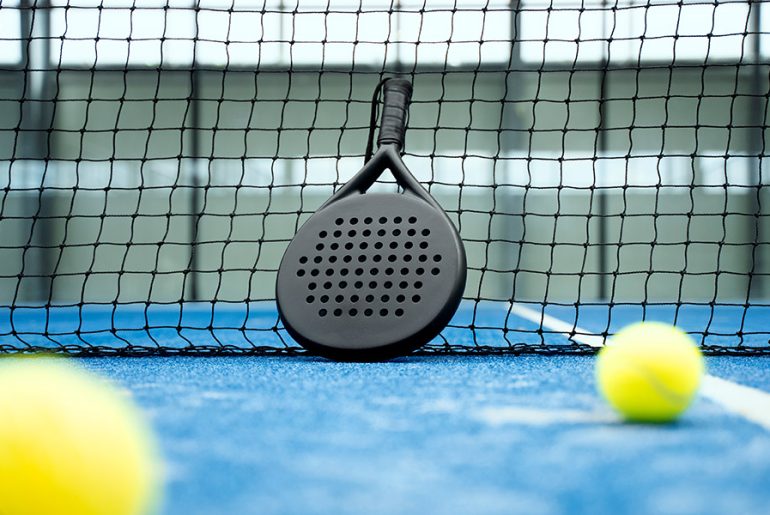Padel has exploded across the Netherlands, becoming one of the fastest-growing sports in Europe. Learning how to start playing padel with NLPadel opens up a world of innovative approaches to this exciting racquet sport, combining traditional gameplay with cutting-edge technology and community-focused experiences. Whether you’re completely new to racquet sports or transitioning from tennis, padel provides an accessible and thrilling way to stay active.
Understanding Padel Basics
Padel combines elements of tennis and squash, played on an enclosed court roughly one-third the size of a tennis court. The glass walls and wire mesh fencing become part of the game, creating unique strategic opportunities. Players use solid paddles without strings, and the ball must bounce once on your side before hitting it.
The scoring system mirrors tennis, using 15, 30, 40, and game points. However, the serve must be underhand, bouncing the ball before hitting it below waist level. These fundamental differences make padel more accessible than tennis while maintaining excitement and competitiveness.
Court Dimensions and Equipment
Standard padel courts measure 20 meters long and 10 meters wide, surrounded by walls that are 3-4 meters high. The playing surface typically uses artificial grass or specialized court materials that provide consistent ball bounce. The net stands 88 centimeters high at the center, slightly lower than tennis nets.
Essential equipment includes a padel racket, specialized padel balls, and appropriate athletic shoes with good lateral support. Padel rackets are solid, perforated, and generally weigh between 360-390 grams. The balls are similar to tennis balls but with slightly lower pressure, creating a slower game pace perfect for beginners.
Getting Started with NLPadel
NLPadel represents the Netherlands’ innovative approach to padel, integrating smart technology with traditional gameplay. The platform connects players across the country, offering court bookings, skill tracking, and community features that enhance the learning experience.
New players benefit from NLPadel’s structured approach to skill development. The system provides personalized recommendations based on your experience level, physical fitness, and learning goals. Smart court technology tracks your progress, helping identify areas for improvement without overwhelming beginners with complex data.
Finding Your First Court
Netherlands boasts hundreds of padel courts across major cities and smaller communities. Amsterdam, Rotterdam, Utrecht, and The Hague lead in court availability, but facilities are rapidly expanding throughout the country. NLPadel’s platform simplifies court discovery, showing real-time availability, pricing, and facility amenities.
Many facilities offer beginner-friendly environments with professional instruction available. Look for courts that provide equipment rental, as purchasing your own gear before understanding your preferences can be expensive. Quality facilities also offer proper lighting for evening play and climate-controlled indoor options during harsh weather.
Learning the Fundamental Techniques
Serving Strategies
The underhand serve distinguishes padel from other racquet sports. Stand behind the service line with both feet behind the line. Drop the ball and hit it below waist level, aiming diagonally across to the opponent’s service box. The ball must bounce once in the service box before the opponent returns it.
Practice different serving angles and speeds to develop consistency. Beginners should focus on getting the ball in play rather than attempting powerful serves. As comfort increases, experiment with spin and placement to challenge opponents while maintaining control.
Basic Strokes and Positioning
Forehand and backhand strokes form the foundation of padel technique. Unlike tennis, padel strokes are generally more compact with less follow-through. The enclosed court means balls frequently come off walls, requiring quick reflexes and adaptive positioning.
Position yourself near the net when possible, as volleying provides significant advantages. However, be prepared to retreat when opponents hit lobs or deep shots. Communication with your partner is crucial since padel is exclusively played in doubles format.
Wall Play Fundamentals
Mastering wall interactions separates good padel players from great ones. Balls can hit side walls, back walls, or your side’s walls before crossing to opponents. Practice hitting balls that come off walls at various angles, developing comfort with these unique scenarios.
Start by practicing simple wall rebounds during warm-up sessions. Hit balls gently against side walls and practice returning them consistently. As skills improve, incorporate wall shots into strategic gameplay, using angles to create difficult returns for opponents.
Building Your Skills Through Practice
Solo Training Exercises
Individual practice accelerates skill development between group sessions. Wall drills help develop ball control and reaction time. Practice hitting balls against walls at different heights and angles, focusing on consistent contact and smooth technique.
Shadow swing exercises improve muscle memory for proper stroke mechanics. Visualize different game scenarios while practicing footwork and stroke preparation. These mental rehearsals translate directly to improved court performance.
Group Training Benefits
Playing with others provides essential match experience that solo practice cannot replicate. Start with other beginners to build confidence before challenging more experienced players. Mixed-skill group sessions offer learning opportunities through observation and friendly competition.
Many NLPadel communities organize beginner-friendly group sessions and tournaments. These events provide structured learning environments while building social connections within the padel community. The supportive atmosphere helps newcomers develop skills without pressure.
Joining the Dutch Padel Community
The Netherlands padel community welcomes newcomers enthusiastically. Local clubs organize regular events, tournaments, and social gatherings that extend beyond court time. Many facilities offer beginner clinics, group lessons, and mentorship programs connecting new players with experienced members.
NLPadel’s platform facilitates community connections through player matching services, local event listings, and skill-based groupings. The social aspect of padel often becomes as important as the physical activity itself, creating lasting friendships and regular playing partnerships.
Tournament Participation
Once basic skills develop, local tournaments provide exciting challenges and skill benchmarks. Netherlands hosts numerous beginner-friendly tournaments throughout the year, from casual club events to regional competitions. These experiences accelerate learning while building competitive confidence.
Start with internal club tournaments before entering larger competitions. The supportive tournament atmosphere in Dutch padel communities makes these events enjoyable rather than intimidating for newcomers.
Conclusion
Starting your padel journey with NLPadel opens doors to an exciting sport that combines physical activity, strategic thinking, and social connection. The accessible nature of padel, combined with Netherlands’ innovative approach and welcoming community, creates ideal conditions for beginners. Focus on fundamentals, embrace the learning process, and enjoy connecting with fellow players. With consistent practice and community engagement, you’ll quickly discover why padel has become the Netherlands’ most exciting racquet sport phenomenon. The combination of traditional gameplay and modern technology ensures your padel experience will be both challenging and rewarding from your very first game.






